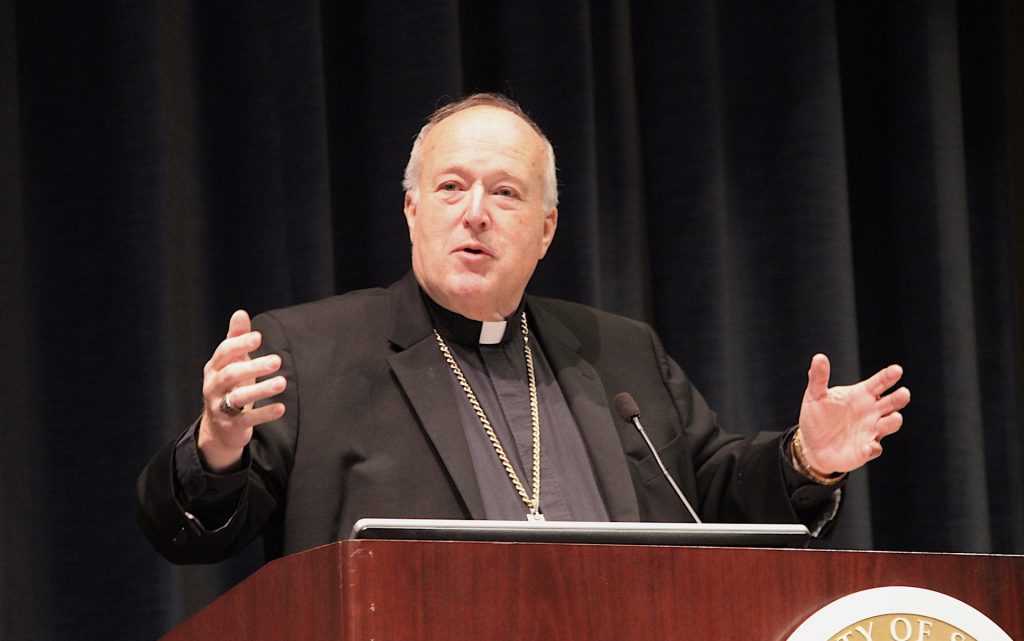By Mark Pattison
WASHINGTON — Thirty-three men between George Washington and John F. Kennedy served as U.S. president. Until Kennedy, all were white Anglo-Saxon Protestant men. It took 172 years for a Catholic to win the presidency.
The wait for the next Catholic president has been sitting at 60 years — until Nov. 7 when the media announced Joe Biden as the presumptive president-elect, unseating the Republican incumbent, President Donald Trump.
From the time of Washington’s election in 1788, 140 years elapsed until the Democrats’ nomination of New York Gov. Al Smith to run for president in 1928. Smith, the first Catholic major-party presidential nominee, was hounded by charges of “rum, Romanism and rebellion” by his political opponents in Prohibition-era America. Smith lost in a landslide to Herbert Hoover.
The rum-Romanism-rebellion trope was a holdover from the 1884 presidential campaign. James Blaine of Maine, a Republican, was a Presbyterian as was his father. But his mother was a Catholic, and his parents agreed to raise their sons as Presbyterians and their daughters as Catholics. One of Blaine’s cousins was a nun who founded the first U.S. convent for the Sisters of the Holy Cross.
The last-week campaign slur by a key Republican energized Catholic voters in New York against Blaine, who lost New York and its 36 electoral votes by 0.10%. Had Blaine won New York, he would have had an advantage of 17 electoral votes — and the presidency.
JFK never got to serve his full term, being assassinated in Dallas Nov. 22, 1963 — the most recent president to be slain by an assailant’s weapon.
Less than a year later, William E. Miller, a seventh-term congressman from New York, was nominated to seek the vice presidency by the Republicans in support of Barry Goldwater at the top of the ticket. That made him the first Catholic candidate for the vice presidency. He grew into such obscurity that, in the mid-1980s, he made one of the “Do you know me?” commercials for the American Express card. His daughter, Stephanie, a comedian and talk-show host, became more famous than he did.
It was not until 2012 when another Catholic appeared on the GOP ticket, when House Speaker Paul Ryan of Wisconsin ran as Mitt Romney’s vice presidential pick. The current vice president, Mike Pence, was raised Catholic but became an evangelical Christian in adulthood. No Catholic, despite the Republican Party’s ardent courtship of Catholics in recent decades, has ever graced the top of the ticket.
In 1968, JFK’s brother, New York Sen. Robert F. Kennedy, launched an 11th-hour campaign for the Democratic presidential nomination. Whether he would have captured the nomination is a question left to history. He was assassinated inside a Los Angeles hotel where he had just given a victory speech after winning the delegate-rich California primary.
Sargent Shriver, an in-law to the Kennedys, was George McGovern’s running mate in 1972, but the McGovern-Shriver ticket was swamped by the Richard Nixon-Spiro Agnew reelection bid.
JFK’s election as president, in which he squarely took on anti-Catholic bias, broke a WASP stranglehold on the White House, and led political parties to consider characteristics other than regional difference to balance a presidential tickets.
In the absence of a Catholic sitting in the Oval Office, a sizable to-do was made over the election of Bill Clinton in 1992, as Clinton had attended Georgetown University in Washington and received a bachelor’s degree there. He became the first graduate of a Catholic college to make it to the White House.
It was not until 2004, though, that another Catholic, John Kerry, captured the Democratic nomination. During primary season, before Kerry became the nominee, then-Archbishop Raymond L. Burke of St. Louis famously said in an interview that if Kerry presented himself for Communion while campaigning in the archdiocese, that he would refuse Kerry the Eucharist because of his “pro-choice” stand on abortion.
In 1984, Geraldine Ferraro, a Catholic, became the first woman on a presidential ticket, although she and presidential hopeful Walter Mondale lost badly to the re-election campaign of Ronald Reagan and George H.W. Bush. In fact, Reagan became the first president to have been divorced before winning the White House, and Trump, in 2017, became the first twice-divorced U.S. president.
It took 24 more years following Ferraro before a woman was placed on a major-party ticket, when Republican standard-bearer John McCain made Sarah Palin his VP pick in 2008. The McCain-Palin ticket lost to the Barack Obama-Biden ticket, which made Biden the nation’s first Catholic vice president. Obama, of course, became the first African American major-party nominee — and president.
Biden, before he became the Democratic presidential nominee, had pledged early in his campaign he would choose a woman as his running mate, and his choice Aug. 11 of Sen. Kamala Harris of California makes her the first Black vice presidential candidate.
Her father is Jamaican American and her late mother was born in India, making Harris the first major-party nominee with a South Asian heritage.
In 2000, Joe Lieberman, a Democratic senator from Connecticut, became the first Jew on a major-party ticket when he ran as Al Gore’s running mate in a close-shave election that had to be decided by the Supreme Court.
In 2012, Mitt Romney of Utah became the first member of the Church of Jesus Christ of Latter-day Saints to win his party’s presidential nomination, losing to Obama.
Four years ago, Hilary Clinton, in a groundbreaking campaign as the first woman to run for the nation’s highest office — with a U.S. Sen. Tim Kaine, D-Virginia, a Catholic, as her running mate — lost the election to Trump. Although Clinton garnered about 3 million more votes in the popular vote, Trump won Electoral College vote 304 to 227.




